Deck 3: Functions and Graphs
Question
Question
Question
Question
Question
Question
Question
Question
Question
Question
Question
Question
Question
Question
Question
Question
Question
Question
Question
Question
Question
Question
Question
Question
Question
Question
Question
Question
Question
Question
Question
Question
Question
Question
Question
Question
Question
Question
Question
Question
Question
Question
Question
Question
Question
Question
Question
Question
Question
Question
Question
Question
Question
Question
Question
Question
Question
Question
Question
Question
Question
Question
Question
Question
Question
Question
Question
Question
Question
Question
Question
Question
Question
Question
Question
Question
Question
Question
Question
Question

Unlock Deck
Sign up to unlock the cards in this deck!
Unlock Deck
Unlock Deck
1/147
Play
Full screen (f)
Deck 3: Functions and Graphs
1
Find the domain of 

A)
B)
C)
D)
E)


A)

B)

C)

D)

E)


2
Find the midpoint of the segment AB between the points A (- 3, - 5) and B (15, 7)
A)( 6, 1 )
B)( 15, 1 )
C)( 3, 1 )
D)( 1, 1 )
E)( 6, 7 )
A)( 6, 1 )
B)( 15, 1 )
C)( 3, 1 )
D)( 1, 1 )
E)( 6, 7 )
( 6, 1 )
3
Let y = f (x) be a function with domain D = [ -6, -3 ] and range R = [ -8, -2 ]. Find the domain D and range R for the function ![<strong>Let y = f (x) be a function with domain D = [ -6, -3 ] and range R = [ -8, -2 ]. Find the domain D and range R for the function </strong> A) B) C) D) E)](https://d2lvgg3v3hfg70.cloudfront.net/TB8634/11eb7cb3_b045_64be_acd2_9143f5287ade_TB8634_11.jpg)
A)![<strong>Let y = f (x) be a function with domain D = [ -6, -3 ] and range R = [ -8, -2 ]. Find the domain D and range R for the function </strong> A) B) C) D) E)](https://d2lvgg3v3hfg70.cloudfront.net/TB8634/11eb7cb3_b045_64bf_acd2_9b0466e85b47_TB8634_11.jpg)
B)![<strong>Let y = f (x) be a function with domain D = [ -6, -3 ] and range R = [ -8, -2 ]. Find the domain D and range R for the function </strong> A) B) C) D) E)](https://d2lvgg3v3hfg70.cloudfront.net/TB8634/11eb7cb3_b045_64c0_acd2_9f8de81a695b_TB8634_11.jpg)
C)![<strong>Let y = f (x) be a function with domain D = [ -6, -3 ] and range R = [ -8, -2 ]. Find the domain D and range R for the function </strong> A) B) C) D) E)](https://d2lvgg3v3hfg70.cloudfront.net/TB8634/11eb7cb3_b045_64c1_acd2_f541372e7aa5_TB8634_11.jpg)
D)![<strong>Let y = f (x) be a function with domain D = [ -6, -3 ] and range R = [ -8, -2 ]. Find the domain D and range R for the function </strong> A) B) C) D) E)](https://d2lvgg3v3hfg70.cloudfront.net/TB8634/11eb7cb3_b045_8bd2_acd2_bdaa9dbf3292_TB8634_11.jpg)
E)![<strong>Let y = f (x) be a function with domain D = [ -6, -3 ] and range R = [ -8, -2 ]. Find the domain D and range R for the function </strong> A) B) C) D) E)](https://d2lvgg3v3hfg70.cloudfront.net/TB8634/11eb7cb3_b045_8bd3_acd2_d3843227b783_TB8634_11.jpg)
![<strong>Let y = f (x) be a function with domain D = [ -6, -3 ] and range R = [ -8, -2 ]. Find the domain D and range R for the function </strong> A) B) C) D) E)](https://d2lvgg3v3hfg70.cloudfront.net/TB8634/11eb7cb3_b045_64be_acd2_9143f5287ade_TB8634_11.jpg)
A)
![<strong>Let y = f (x) be a function with domain D = [ -6, -3 ] and range R = [ -8, -2 ]. Find the domain D and range R for the function </strong> A) B) C) D) E)](https://d2lvgg3v3hfg70.cloudfront.net/TB8634/11eb7cb3_b045_64bf_acd2_9b0466e85b47_TB8634_11.jpg)
B)
![<strong>Let y = f (x) be a function with domain D = [ -6, -3 ] and range R = [ -8, -2 ]. Find the domain D and range R for the function </strong> A) B) C) D) E)](https://d2lvgg3v3hfg70.cloudfront.net/TB8634/11eb7cb3_b045_64c0_acd2_9f8de81a695b_TB8634_11.jpg)
C)
![<strong>Let y = f (x) be a function with domain D = [ -6, -3 ] and range R = [ -8, -2 ]. Find the domain D and range R for the function </strong> A) B) C) D) E)](https://d2lvgg3v3hfg70.cloudfront.net/TB8634/11eb7cb3_b045_64c1_acd2_f541372e7aa5_TB8634_11.jpg)
D)
![<strong>Let y = f (x) be a function with domain D = [ -6, -3 ] and range R = [ -8, -2 ]. Find the domain D and range R for the function </strong> A) B) C) D) E)](https://d2lvgg3v3hfg70.cloudfront.net/TB8634/11eb7cb3_b045_8bd2_acd2_bdaa9dbf3292_TB8634_11.jpg)
E)
![<strong>Let y = f (x) be a function with domain D = [ -6, -3 ] and range R = [ -8, -2 ]. Find the domain D and range R for the function </strong> A) B) C) D) E)](https://d2lvgg3v3hfg70.cloudfront.net/TB8634/11eb7cb3_b045_8bd3_acd2_d3843227b783_TB8634_11.jpg)

4
A cable television firm presently serves 5,900 households and charges $22 per month. A marketing survey indicates that each decrease of $1 in the monthly charge will result in 590 new customers. Let R(x) denote the total monthly revenue when the monthly charge is x dollars. Find the value of x that results in maximum monthly revenue.
A)$21
B)$6
C)$11
D)$16
E)$22
A)$21
B)$6
C)$11
D)$16
E)$22

Unlock Deck
Unlock for access to all 147 flashcards in this deck.
Unlock Deck
k this deck
5
Find the domain of 

A)
B)
C)
D)
E)


A)

B)

C)

D)

E)


Unlock Deck
Unlock for access to all 147 flashcards in this deck.
Unlock Deck
k this deck
6
Express the function in the form of  .
. 
A)
B)
C)
D)
E)
 .
. 
A)

B)

C)

D)

E)


Unlock Deck
Unlock for access to all 147 flashcards in this deck.
Unlock Deck
k this deck
7
Express the function  in the form of
in the form of 

A)
B)
C)
D)
E)
 in the form of
in the form of 

A)

B)

C)

D)

E)


Unlock Deck
Unlock for access to all 147 flashcards in this deck.
Unlock Deck
k this deck
8
The owner of an ice cream franchise must pay the parent company $1,100 per month plus 5% of the monthly revenue R. Operating cost of the franchise includes a fixed cost of $2,500 per month for items such as utilities and labor. The cost of ice cream and supplies is 50% of the revenue. Determine the monthly revenue needed to break even.
A)$3,600
B)$1,620
C)$1,400
D)$8,000
E)$6,545
A)$3,600
B)$1,620
C)$1,400
D)$8,000
E)$6,545

Unlock Deck
Unlock for access to all 147 flashcards in this deck.
Unlock Deck
k this deck
9
If  are real numbers, find
are real numbers, find 

A)f ( a ) + f ( h ) = a 2 + h 2 + a + h + 6
B)f ( a ) + f ( h ) = a 2 + h 2 - a - h + 6
C)f ( a ) + f ( h ) = a 2 + h 2 - a - h
D)f ( a ) + f ( h ) = a 2 + h 2 - a - h - 6
E)f ( a ) + f ( h ) = a 2 + h 2 + a + h
 are real numbers, find
are real numbers, find 

A)f ( a ) + f ( h ) = a 2 + h 2 + a + h + 6
B)f ( a ) + f ( h ) = a 2 + h 2 - a - h + 6
C)f ( a ) + f ( h ) = a 2 + h 2 - a - h
D)f ( a ) + f ( h ) = a 2 + h 2 - a - h - 6
E)f ( a ) + f ( h ) = a 2 + h 2 + a + h

Unlock Deck
Unlock for access to all 147 flashcards in this deck.
Unlock Deck
k this deck
10
Given the two lines graphed on the same coordinate plane, find the coordinates of the point of intersection (the coordinates are integers). 
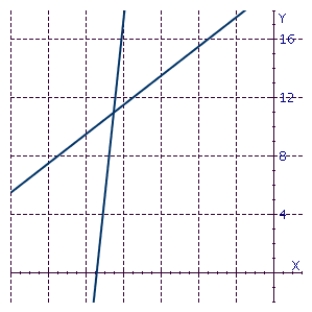
A)( - 17, 11 )
B)( - 11, 14 )
C)( - 11, 12 )
D)( - 16, 12 )
E)( - 11, 17 )


A)( - 17, 11 )
B)( - 11, 14 )
C)( - 11, 12 )
D)( - 16, 12 )
E)( - 11, 17 )

Unlock Deck
Unlock for access to all 147 flashcards in this deck.
Unlock Deck
k this deck
11
Consider the following equations and their graph. Express, in interval form, the x-values such that Y 1 > Y 2 . Assume that the x- and y-values of each point of intersection are integers. 
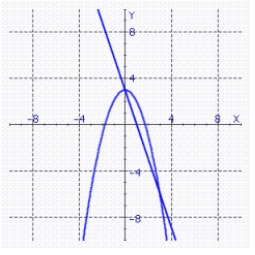
A)
B)
C)
D)
E)


A)

B)

C)

D)

E)


Unlock Deck
Unlock for access to all 147 flashcards in this deck.
Unlock Deck
k this deck
12
Find the point with coordinates of the form (2a, a) that is in the third quadrant and is a distance 9 from P(3, 4).
A)( - 3.90, - 1.95 )
B)( - 4.00, - 1.90 )
C)( - 3.70, - 1.85 )
D)( - 4.00, - 7.99 )
E)( - 3.80, - 1.90 )
A)( - 3.90, - 1.95 )
B)( - 4.00, - 1.90 )
C)( - 3.70, - 1.85 )
D)( - 4.00, - 7.99 )
E)( - 3.80, - 1.90 )

Unlock Deck
Unlock for access to all 147 flashcards in this deck.
Unlock Deck
k this deck
13
Use tests for symmetry to determine if the graph of the function is symmetric with respect to the y-axis, the x-axis, or the origin. 
A)the graph is symmetric with respect to the x-axis
B)the graph is symmetric with respect to the y-axis
C)the graph is symmetric with respect to the x-axis and the y-axis
D)the graph is symmetric with respect to the origin
E)the graph is not symmetric

A)the graph is symmetric with respect to the x-axis
B)the graph is symmetric with respect to the y-axis
C)the graph is symmetric with respect to the x-axis and the y-axis
D)the graph is symmetric with respect to the origin
E)the graph is not symmetric

Unlock Deck
Unlock for access to all 147 flashcards in this deck.
Unlock Deck
k this deck
14
Find the equation of the circle that satisfies the conditions: 
A)(x + 2) 2 + (y - 8) 2 = 6
B)(x - 2) 2 + (y + 8) 2 = 36
C)(x - 2) 2 + (y + 8) 2 = 6
D)(x + 2) 2 + (y + 8) 2 = 36
E)(x + 2) 2 - (y + 8) 2 = 36

A)(x + 2) 2 + (y - 8) 2 = 6
B)(x - 2) 2 + (y + 8) 2 = 36
C)(x - 2) 2 + (y + 8) 2 = 6
D)(x + 2) 2 + (y + 8) 2 = 36
E)(x + 2) 2 - (y + 8) 2 = 36

Unlock Deck
Unlock for access to all 147 flashcards in this deck.
Unlock Deck
k this deck
15
Find the graph of the line through  for the value of
for the value of  =
= 
A)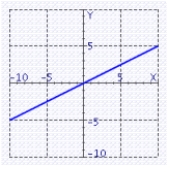
B)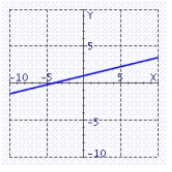
C)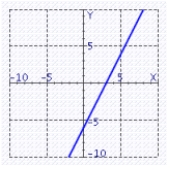
D)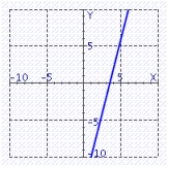
E)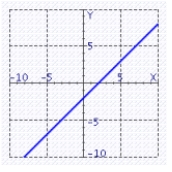
 for the value of
for the value of  =
= 
A)

B)

C)

D)

E)


Unlock Deck
Unlock for access to all 147 flashcards in this deck.
Unlock Deck
k this deck
16
Sketch the graphs of the lines on the same coordinate plane. 
A)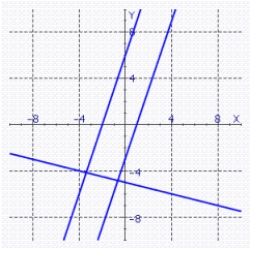
B)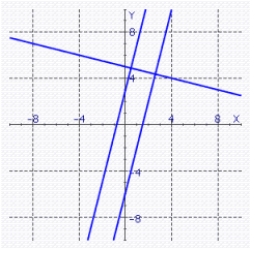
C)
D)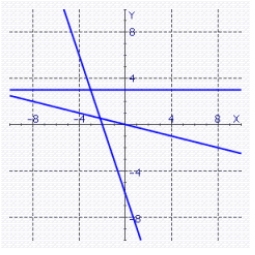
E)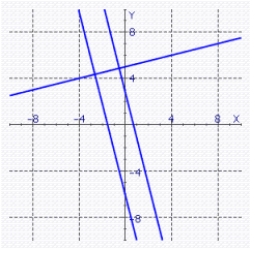

A)

B)

C)

D)

E)


Unlock Deck
Unlock for access to all 147 flashcards in this deck.
Unlock Deck
k this deck
17
Find the distance d (A, B) between the points A (3, - 2) and B (8, 3).
A)6.77
B)6.07
C)7.07
D)7.57
E)6.97
A)6.77
B)6.07
C)7.07
D)7.57
E)6.97

Unlock Deck
Unlock for access to all 147 flashcards in this deck.
Unlock Deck
k this deck
18
A college student receives an interest-free loan of $8,875 from a relative. The student will repay $155 per month until the loan is paid off. After how many months will the student owe $5,000?
A)after 32 months.
B)after 26 months.
C)after 22 months.
D)after 25 months.
E)after 12.5 months.
A)after 32 months.
B)after 26 months.
C)after 22 months.
D)after 25 months.
E)after 12.5 months.

Unlock Deck
Unlock for access to all 147 flashcards in this deck.
Unlock Deck
k this deck
19
Sketch the graph of f 
A)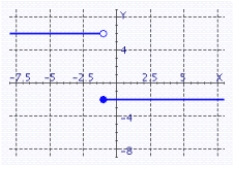
B)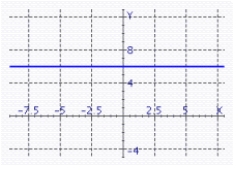
C)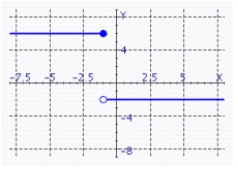
D)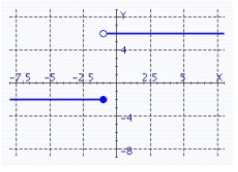

A)

B)

C)

D)


Unlock Deck
Unlock for access to all 147 flashcards in this deck.
Unlock Deck
k this deck
20
Given A (7, -3) and B (-9, 9), find the point on segment AB that is three-fourths of the way from A to B.
A)( 3, 0 )
B)( -6, 3 )
C)( -5, 6 )
D)( 6, -5 )
E)( 0, 3 )
A)( 3, 0 )
B)( -6, 3 )
C)( -5, 6 )
D)( 6, -5 )
E)( 0, 3 )

Unlock Deck
Unlock for access to all 147 flashcards in this deck.
Unlock Deck
k this deck
21
Use tests for symmetry to determine if the graph of the function is symmetric with respect to the y-axis, the x-axis, or the origin. 
A)the graph is symmetric with respect to the x-axis and the y-axis
B)the graph is symmetric with respect to the y-axis
C)the graph is symmetric with respect to the origin
D)the graph is symmetric with respect to the x-axis
E)the graph is not symmetric

A)the graph is symmetric with respect to the x-axis and the y-axis
B)the graph is symmetric with respect to the y-axis
C)the graph is symmetric with respect to the origin
D)the graph is symmetric with respect to the x-axis
E)the graph is not symmetric

Unlock Deck
Unlock for access to all 147 flashcards in this deck.
Unlock Deck
k this deck
22
Find the point with coordinates of the form (2a, a) that is in the third quadrant and is a distance 8 from P(2, 1).
A)( - 5.36, - 2.58 )
B)( - 5.26, - 2.63 )
C)( - 5.06, - 2.53 )
D)( - 5.16, - 2.58 )
E)( - 5.36, - 10.71 )
A)( - 5.36, - 2.58 )
B)( - 5.26, - 2.63 )
C)( - 5.06, - 2.53 )
D)( - 5.16, - 2.58 )
E)( - 5.36, - 10.71 )

Unlock Deck
Unlock for access to all 147 flashcards in this deck.
Unlock Deck
k this deck
23
Find the distance d (A, B) between the points A (4, - 6) and B (7, 3).
A)8.49
B)9.49
C)9.19
D)9.39
E)9.99
A)8.49
B)9.49
C)9.19
D)9.39
E)9.99

Unlock Deck
Unlock for access to all 147 flashcards in this deck.
Unlock Deck
k this deck
24
Find the domain of 

A)
B)
C)
D)
E)


A)

B)

C)

D)

E)


Unlock Deck
Unlock for access to all 147 flashcards in this deck.
Unlock Deck
k this deck
25
Consider the following equations and their graph. Express, in interval form, the x-values such that Y 1 > Y 2 . Assume that the x- and y-values of each point of intersection are integers. 
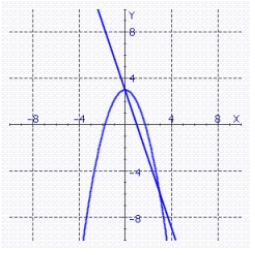
A)
B)
C)
D)
E)


A)

B)

C)

D)

E)


Unlock Deck
Unlock for access to all 147 flashcards in this deck.
Unlock Deck
k this deck
26
Find the domain of 

A)
B)
C)
D)
E)


A)

B)

C)

D)

E)


Unlock Deck
Unlock for access to all 147 flashcards in this deck.
Unlock Deck
k this deck
27
Find 
 and
and 
A)
B)
C)
D)
E)

 and
and 
A)

B)

C)

D)

E)


Unlock Deck
Unlock for access to all 147 flashcards in this deck.
Unlock Deck
k this deck
28
An object is projected vertically upward from the top of a building with an initial velocity of  ft/sec. Its distance
ft/sec. Its distance  in feet above the ground after
in feet above the ground after  seconds is given by the equation
seconds is given by the equation  Find its maximum distance above the ground.
Find its maximum distance above the ground.
A) ft
ft
B) ft
ft
C) ft
ft
D) ft
ft
E) ft
ft
 ft/sec. Its distance
ft/sec. Its distance  in feet above the ground after
in feet above the ground after  seconds is given by the equation
seconds is given by the equation  Find its maximum distance above the ground.
Find its maximum distance above the ground.A)
 ft
ftB)
 ft
ftC)
 ft
ftD)
 ft
ftE)
 ft
ft
Unlock Deck
Unlock for access to all 147 flashcards in this deck.
Unlock Deck
k this deck
29
A college student receives an interest-free loan of $8,250 from a relative. The student will repay $125 per month until the loan is paid off. After how many months will the student owe $5,000?
A)after 2.6 months.
B)after 26 months.
C)after 40 months.
D)after 28 months.
E)after 23 months.
A)after 2.6 months.
B)after 26 months.
C)after 40 months.
D)after 28 months.
E)after 23 months.

Unlock Deck
Unlock for access to all 147 flashcards in this deck.
Unlock Deck
k this deck
30
Find a composite function form for y if: 
A)
B)
C)
D)
E)

A)

B)

C)

D)

E)


Unlock Deck
Unlock for access to all 147 flashcards in this deck.
Unlock Deck
k this deck
31
If  are real numbers, find
are real numbers, find 

A)f ( a ) + f ( h ) = a 2 + h 2 + a + h
B)f ( a ) + f ( h ) = a 2 + h 2 - a - h
C)f ( a ) + f ( h ) = a 2 + h 2 + a + h + 2
D)f ( a ) + f ( h ) = a 2 + h 2 - a - h - 2
E)f ( a ) + f ( h ) = a 2 + h 2 - a - h + 2
 are real numbers, find
are real numbers, find 

A)f ( a ) + f ( h ) = a 2 + h 2 + a + h
B)f ( a ) + f ( h ) = a 2 + h 2 - a - h
C)f ( a ) + f ( h ) = a 2 + h 2 + a + h + 2
D)f ( a ) + f ( h ) = a 2 + h 2 - a - h - 2
E)f ( a ) + f ( h ) = a 2 + h 2 - a - h + 2

Unlock Deck
Unlock for access to all 147 flashcards in this deck.
Unlock Deck
k this deck
32
Find the equation of the circle that satisfies the conditions: 
A)(x - 9) 2 + (y + 6) 2 = 4
B)(x + 9) 2 + (y - 6) 2 = 4
C)(x + 9) 2 + (y + 6) 2 = 16
D)(x - 9) 2 + (y + 6) 2 = 16
E)(x + 9) 2 - (y + 6) 2 = 16

A)(x - 9) 2 + (y + 6) 2 = 4
B)(x + 9) 2 + (y - 6) 2 = 4
C)(x + 9) 2 + (y + 6) 2 = 16
D)(x - 9) 2 + (y + 6) 2 = 16
E)(x + 9) 2 - (y + 6) 2 = 16

Unlock Deck
Unlock for access to all 147 flashcards in this deck.
Unlock Deck
k this deck
33
Find the domain of 

A)
B)
C)
D)
E)


A)

B)

C)

D)

E)


Unlock Deck
Unlock for access to all 147 flashcards in this deck.
Unlock Deck
k this deck
34
Given A (2, -1) and B (-6, 7), find the point on segment AB that is three-fourths of the way from A to B.
A)( 1, 0 )
B)( 5, -4 )
C)( 0, 1 )
D)( -4, 5 )
E)( -2, 0 )
A)( 1, 0 )
B)( 5, -4 )
C)( 0, 1 )
D)( -4, 5 )
E)( -2, 0 )

Unlock Deck
Unlock for access to all 147 flashcards in this deck.
Unlock Deck
k this deck
35
Sketch the graphs of the lines on the same coordinate plane. 
A)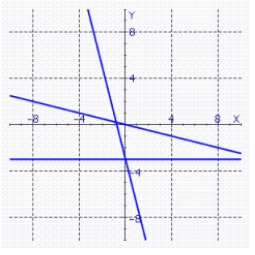
B)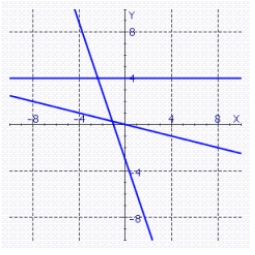
C)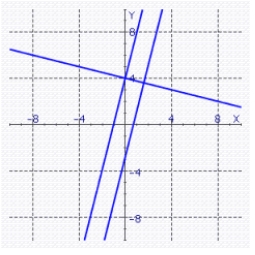
D)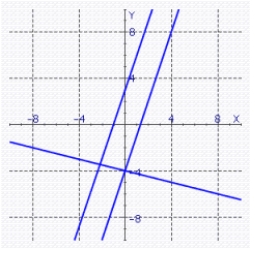
E)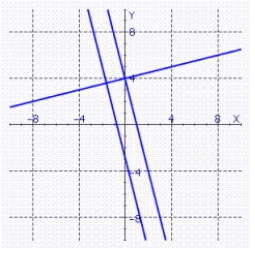

A)

B)

C)

D)

E)


Unlock Deck
Unlock for access to all 147 flashcards in this deck.
Unlock Deck
k this deck
36
The owner of an ice cream franchise must pay the parent company $1,200 per month plus 7% of the monthly revenue R. Operating cost of the franchise includes a fixed cost of $2,300 per month for items such as utilities and labor. The cost of ice cream and supplies is 53% of the revenue. Determine the monthly revenue needed to break even.
A)$5,833
B)$8,750
C)$3,500
D)$1,400
E)$1,100
A)$5,833
B)$8,750
C)$3,500
D)$1,400
E)$1,100

Unlock Deck
Unlock for access to all 147 flashcards in this deck.
Unlock Deck
k this deck
37
Find the graph of the line through  for the value of
for the value of  =
= 
A)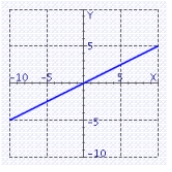
B)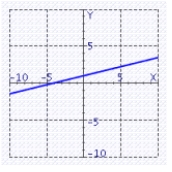
C)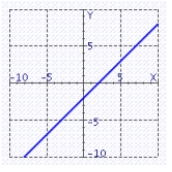
D)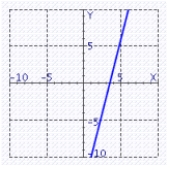
E)
 for the value of
for the value of  =
= 
A)

B)

C)

D)

E)


Unlock Deck
Unlock for access to all 147 flashcards in this deck.
Unlock Deck
k this deck
38
Find the midpoint of the segment AB between the points A (- 5, - 3) and B (9, 13)
A)( 2, 5 )
B)( 3, 5 )
C)( 5, 5 )
D)( 9, 5 )
E)( 2, 13 )
A)( 2, 5 )
B)( 3, 5 )
C)( 5, 5 )
D)( 9, 5 )
E)( 2, 13 )

Unlock Deck
Unlock for access to all 147 flashcards in this deck.
Unlock Deck
k this deck
39
A 100-foot-long cable of diameter 2 inches is submerged in seawater. Because of corrosion, the surface area of the cable decreases at the rate of 900in 2 per year. Express the diameter d of the cable as a function of time t (in years). (Disregard corrosion at the ends of the cable.)
A) inches
inches
B) inches
inches
C) inches
inches
D) inches
inches
E) inches
inches
A)
 inches
inchesB)
 inches
inchesC)
 inches
inchesD)
 inches
inchesE)
 inches
inches
Unlock Deck
Unlock for access to all 147 flashcards in this deck.
Unlock Deck
k this deck
40
Given the two lines graphed on the same coordinate plane, find the coordinates of the point of intersection (the coordinates are integers). 
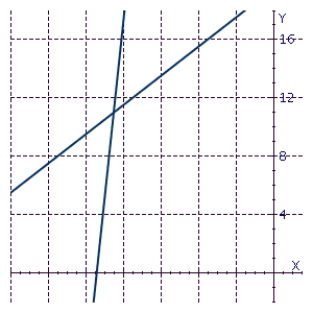
A)( - 11, 17 )
B)( - 17, 11 )
C)( - 11, 14 )
D)( - 16, 12 )
E)( - 11, 12 )


A)( - 11, 17 )
B)( - 17, 11 )
C)( - 11, 14 )
D)( - 16, 12 )
E)( - 11, 12 )

Unlock Deck
Unlock for access to all 147 flashcards in this deck.
Unlock Deck
k this deck
41
Let y = f (x) be a function with domain D = [ -10, -6 ] and range R = [ -7, -3 ]. Find the domain D and range R for the function ![<strong>Let y = f (x) be a function with domain D = [ -10, -6 ] and range R = [ -7, -3 ]. Find the domain D and range R for the function </strong> A) B) C) D) E)](https://d2lvgg3v3hfg70.cloudfront.net/TB8634/11eb7cb3_b048_7265_acd2_3552f998f7f4_TB8634_11.jpg)
A)![<strong>Let y = f (x) be a function with domain D = [ -10, -6 ] and range R = [ -7, -3 ]. Find the domain D and range R for the function </strong> A) B) C) D) E)](https://d2lvgg3v3hfg70.cloudfront.net/TB8634/11eb7cb3_b048_7266_acd2_0f000a453790_TB8634_11.jpg)
B)![<strong>Let y = f (x) be a function with domain D = [ -10, -6 ] and range R = [ -7, -3 ]. Find the domain D and range R for the function </strong> A) B) C) D) E)](https://d2lvgg3v3hfg70.cloudfront.net/TB8634/11eb7cb3_b048_7267_acd2_5368829e4cbd_TB8634_11.jpg)
C)![<strong>Let y = f (x) be a function with domain D = [ -10, -6 ] and range R = [ -7, -3 ]. Find the domain D and range R for the function </strong> A) B) C) D) E)](https://d2lvgg3v3hfg70.cloudfront.net/TB8634/11eb7cb3_b048_7268_acd2_b38b7fb0dbb7_TB8634_11.jpg)
D)![<strong>Let y = f (x) be a function with domain D = [ -10, -6 ] and range R = [ -7, -3 ]. Find the domain D and range R for the function </strong> A) B) C) D) E)](https://d2lvgg3v3hfg70.cloudfront.net/TB8634/11eb7cb3_b048_7269_acd2_efcad70fd001_TB8634_11.jpg)
E)![<strong>Let y = f (x) be a function with domain D = [ -10, -6 ] and range R = [ -7, -3 ]. Find the domain D and range R for the function </strong> A) B) C) D) E)](https://d2lvgg3v3hfg70.cloudfront.net/TB8634/11eb7cb3_b048_997a_acd2_a75a157e9210_TB8634_11.jpg)
![<strong>Let y = f (x) be a function with domain D = [ -10, -6 ] and range R = [ -7, -3 ]. Find the domain D and range R for the function </strong> A) B) C) D) E)](https://d2lvgg3v3hfg70.cloudfront.net/TB8634/11eb7cb3_b048_7265_acd2_3552f998f7f4_TB8634_11.jpg)
A)
![<strong>Let y = f (x) be a function with domain D = [ -10, -6 ] and range R = [ -7, -3 ]. Find the domain D and range R for the function </strong> A) B) C) D) E)](https://d2lvgg3v3hfg70.cloudfront.net/TB8634/11eb7cb3_b048_7266_acd2_0f000a453790_TB8634_11.jpg)
B)
![<strong>Let y = f (x) be a function with domain D = [ -10, -6 ] and range R = [ -7, -3 ]. Find the domain D and range R for the function </strong> A) B) C) D) E)](https://d2lvgg3v3hfg70.cloudfront.net/TB8634/11eb7cb3_b048_7267_acd2_5368829e4cbd_TB8634_11.jpg)
C)
![<strong>Let y = f (x) be a function with domain D = [ -10, -6 ] and range R = [ -7, -3 ]. Find the domain D and range R for the function </strong> A) B) C) D) E)](https://d2lvgg3v3hfg70.cloudfront.net/TB8634/11eb7cb3_b048_7268_acd2_b38b7fb0dbb7_TB8634_11.jpg)
D)
![<strong>Let y = f (x) be a function with domain D = [ -10, -6 ] and range R = [ -7, -3 ]. Find the domain D and range R for the function </strong> A) B) C) D) E)](https://d2lvgg3v3hfg70.cloudfront.net/TB8634/11eb7cb3_b048_7269_acd2_efcad70fd001_TB8634_11.jpg)
E)
![<strong>Let y = f (x) be a function with domain D = [ -10, -6 ] and range R = [ -7, -3 ]. Find the domain D and range R for the function </strong> A) B) C) D) E)](https://d2lvgg3v3hfg70.cloudfront.net/TB8634/11eb7cb3_b048_997a_acd2_a75a157e9210_TB8634_11.jpg)

Unlock Deck
Unlock for access to all 147 flashcards in this deck.
Unlock Deck
k this deck
42
Find the domain of 

A)
B)
C)
D)
E)


A)

B)

C)

D)

E)


Unlock Deck
Unlock for access to all 147 flashcards in this deck.
Unlock Deck
k this deck
43
A cable television firm presently serves 6,600 households and charges $20 per month. A marketing survey indicates that each decrease of $1 in the monthly charge will result in 660 new customers. Let R(x) denote the total monthly revenue when the monthly charge is x dollars. Find the value of x that results in maximum monthly revenue.
A)$18
B)$20
C)$15
D)$10
E)$5
A)$18
B)$20
C)$15
D)$10
E)$5

Unlock Deck
Unlock for access to all 147 flashcards in this deck.
Unlock Deck
k this deck
44
Find a composite function form for y if: 
A)
B)
C)
D)
E)

A)

B)

C)

D)

E)


Unlock Deck
Unlock for access to all 147 flashcards in this deck.
Unlock Deck
k this deck
45
Find the midpoint of the segment AB between the points A (- 1, - 1) and B (13, 9)
A)( 6, 4 )
B)( -1, 4 )
C)( 6, 9 )
D)( 1, 4 )
E)( 13, 4 )
A)( 6, 4 )
B)( -1, 4 )
C)( 6, 9 )
D)( 1, 4 )
E)( 13, 4 )

Unlock Deck
Unlock for access to all 147 flashcards in this deck.
Unlock Deck
k this deck
46
Consider the following equations and their graph. Express, in interval form, the x-values such that Y 1 > Y 2 . Assume that the x- and y-values of each point of intersection are integers. 
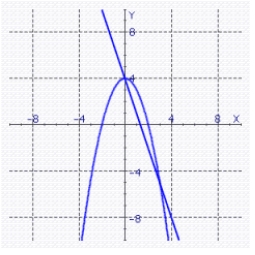
A)
B)
C)
D)
E)


A)

B)

C)

D)

E)


Unlock Deck
Unlock for access to all 147 flashcards in this deck.
Unlock Deck
k this deck
47
Given the two lines graphed on the same coordinate plane, find the coordinates of the point of intersection (the coordinates are integers). 
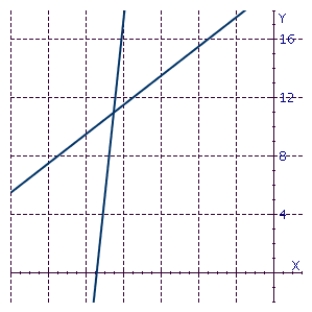
A)( - 11, 17 )
B)( - 16, 12 )
C)( - 11, 14 )
D)( - 17, 11 )
E)( - 11, 12 )


A)( - 11, 17 )
B)( - 16, 12 )
C)( - 11, 14 )
D)( - 17, 11 )
E)( - 11, 12 )

Unlock Deck
Unlock for access to all 147 flashcards in this deck.
Unlock Deck
k this deck
48
Sketch the graphs of the lines on the same coordinate plane. 
A)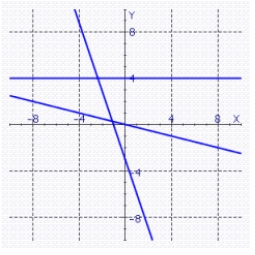
B)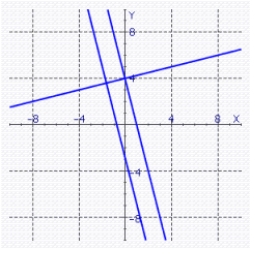
C)
D)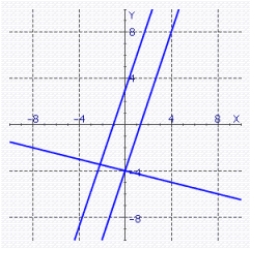
E)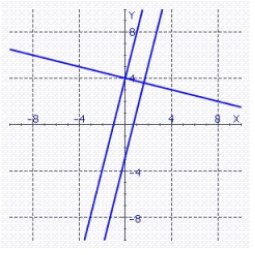

A)

B)

C)

D)

E)


Unlock Deck
Unlock for access to all 147 flashcards in this deck.
Unlock Deck
k this deck
49
An object is projected vertically upward from the top of a building with an initial velocity of  ft/sec. Its distance
ft/sec. Its distance  in feet above the ground after
in feet above the ground after  seconds is given by the equation
seconds is given by the equation  Find its maximum distance above the ground.
Find its maximum distance above the ground.
A) ft
ft
B) ft
ft
C) ft
ft
D) ft
ft
E) ft
ft
 ft/sec. Its distance
ft/sec. Its distance  in feet above the ground after
in feet above the ground after  seconds is given by the equation
seconds is given by the equation  Find its maximum distance above the ground.
Find its maximum distance above the ground.A)
 ft
ftB)
 ft
ftC)
 ft
ftD)
 ft
ftE)
 ft
ft
Unlock Deck
Unlock for access to all 147 flashcards in this deck.
Unlock Deck
k this deck
50
Express the function  in the form of
in the form of 

A)
B)
C)
D)
E)
 in the form of
in the form of 

A)

B)

C)

D)

E)


Unlock Deck
Unlock for access to all 147 flashcards in this deck.
Unlock Deck
k this deck
51
Given A (4, -3) and B (-12, 13), find the point on segment AB that is three-fourths of the way from A to B.
A)( -6, 0 )
B)( -8, 9 )
C)( 0, 1 )
D)( 1, 0 )
E)( 9, -8 )
A)( -6, 0 )
B)( -8, 9 )
C)( 0, 1 )
D)( 1, 0 )
E)( 9, -8 )

Unlock Deck
Unlock for access to all 147 flashcards in this deck.
Unlock Deck
k this deck
52
Find the equation of the circle that satisfies the conditions: 
A)(x + 6) 2 + (y - 4) 2 = 4
B)(x - 6) 2 + (y + 4) 2 = 16
C)(x + 6) 2 - (y + 4) 2 = 16
D)(x + 6) 2 + (y + 4) 2 = 16
E)(x - 6) 2 + (y + 4) 2 = 4

A)(x + 6) 2 + (y - 4) 2 = 4
B)(x - 6) 2 + (y + 4) 2 = 16
C)(x + 6) 2 - (y + 4) 2 = 16
D)(x + 6) 2 + (y + 4) 2 = 16
E)(x - 6) 2 + (y + 4) 2 = 4

Unlock Deck
Unlock for access to all 147 flashcards in this deck.
Unlock Deck
k this deck
53
A 100-foot-long cable of diameter 2 inches is submerged in seawater. Because of corrosion, the surface area of the cable decreases at the rate of 1,000in 2 per year. Express the diameter d of the cable as a function of time t (in years). (Disregard corrosion at the ends of the cable.)
A) inches
inches
B) inches
inches
C) inches
inches
D) inches
inches
E) inches
inches
A)
 inches
inchesB)
 inches
inchesC)
 inches
inchesD)
 inches
inchesE)
 inches
inches
Unlock Deck
Unlock for access to all 147 flashcards in this deck.
Unlock Deck
k this deck
54
Find the distance d (A, B) between the points A (1, - 1) and B (8, 1).
A)7.28
B)6.28
C)6.98
D)7.78
E)7.18
A)7.28
B)6.28
C)6.98
D)7.78
E)7.18

Unlock Deck
Unlock for access to all 147 flashcards in this deck.
Unlock Deck
k this deck
55
Use tests for symmetry to determine if the graph of the function is symmetric with respect to the y-axis, the x-axis, or the origin. 
A)the graph is symmetric with respect to the y-axis
B)the graph is symmetric with respect to the origin
C)the graph is symmetric with respect to the x-axis
D)the graph is symmetric with respect to the x-axis and the y-axis
E)the graph is not symmetric

A)the graph is symmetric with respect to the y-axis
B)the graph is symmetric with respect to the origin
C)the graph is symmetric with respect to the x-axis
D)the graph is symmetric with respect to the x-axis and the y-axis
E)the graph is not symmetric

Unlock Deck
Unlock for access to all 147 flashcards in this deck.
Unlock Deck
k this deck
56
Express the function in the form of  .
. 
A)
B)
C)
D)
E)
 .
. 
A)

B)

C)

D)

E)


Unlock Deck
Unlock for access to all 147 flashcards in this deck.
Unlock Deck
k this deck
57
Find the point with coordinates of the form (2a, a) that is in the third quadrant and is a distance 7 from P(2, 3).
A)( - 3.35, - 1.68 )
B)( - 3.45, - 1.63 )
C)( - 3.25, - 1.63 )
D)( - 3.15, - 1.58 )
E)( - 3.45, - 6.91 )
A)( - 3.35, - 1.68 )
B)( - 3.45, - 1.63 )
C)( - 3.25, - 1.63 )
D)( - 3.15, - 1.58 )
E)( - 3.45, - 6.91 )

Unlock Deck
Unlock for access to all 147 flashcards in this deck.
Unlock Deck
k this deck
58
Sketch the graph of f 
A)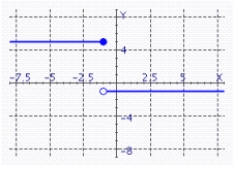
B)
C)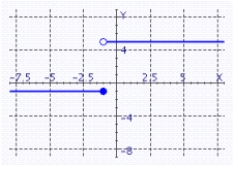
D)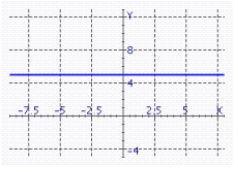

A)

B)

C)

D)


Unlock Deck
Unlock for access to all 147 flashcards in this deck.
Unlock Deck
k this deck
59
Find 
 and
and 
A)
B)
C)
D)
E)

 and
and 
A)

B)

C)

D)

E)


Unlock Deck
Unlock for access to all 147 flashcards in this deck.
Unlock Deck
k this deck
60
Find the graph of the line through  for the value of
for the value of  =
= 
A)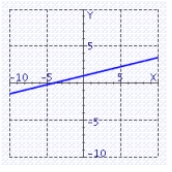
B)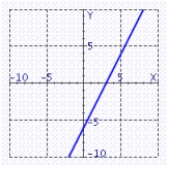
C)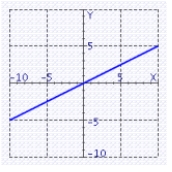
D)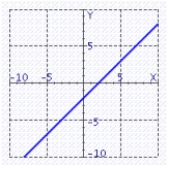
E)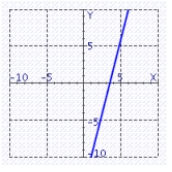
 for the value of
for the value of  =
= 
A)

B)

C)

D)

E)


Unlock Deck
Unlock for access to all 147 flashcards in this deck.
Unlock Deck
k this deck
61
Find the domain of 

A)
B)
C)
D)
E)


A)

B)

C)

D)

E)


Unlock Deck
Unlock for access to all 147 flashcards in this deck.
Unlock Deck
k this deck
62
Find the domain of 

A)
B)
C)
D)
E)


A)

B)

C)

D)

E)


Unlock Deck
Unlock for access to all 147 flashcards in this deck.
Unlock Deck
k this deck
63
Express the function in the form of  .
. 
A)
B)
C)
D)
E)
 .
. 
A)

B)

C)

D)

E)


Unlock Deck
Unlock for access to all 147 flashcards in this deck.
Unlock Deck
k this deck
64
Find a composite function form for y if: 
A)
B)
C)
D)
E)

A)

B)

C)

D)

E)


Unlock Deck
Unlock for access to all 147 flashcards in this deck.
Unlock Deck
k this deck
65
Sketch the graph of the equation. 
A)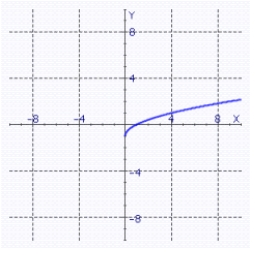
B)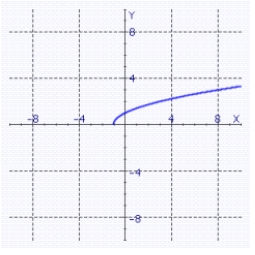
C)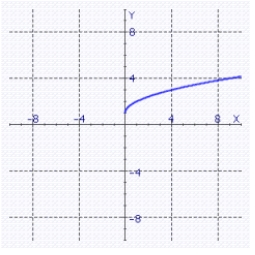
D)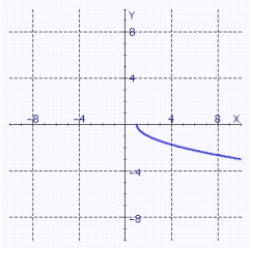
E)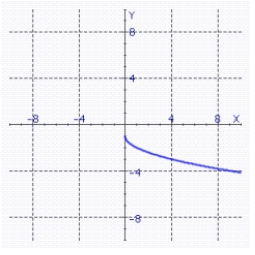

A)

B)

C)

D)

E)


Unlock Deck
Unlock for access to all 147 flashcards in this deck.
Unlock Deck
k this deck
66
Let y = f (x) be a function with domain D = [ -10, -9 ] and range R = [ -10, -7 ]. Find the domain D and range R for the function ![<strong>Let y = f (x) be a function with domain D = [ -10, -9 ] and range R = [ -10, -7 ]. Find the domain D and range R for the function </strong> A) B) C) D) E)](https://d2lvgg3v3hfg70.cloudfront.net/TB8634/11eb7cb3_b04b_57fc_acd2_1b6dc2f5c73b_TB8634_11.jpg)
A)![<strong>Let y = f (x) be a function with domain D = [ -10, -9 ] and range R = [ -10, -7 ]. Find the domain D and range R for the function </strong> A) B) C) D) E)](https://d2lvgg3v3hfg70.cloudfront.net/TB8634/11eb7cb3_b04b_57fd_acd2_95b7e1d0486d_TB8634_11.jpg)
B)![<strong>Let y = f (x) be a function with domain D = [ -10, -9 ] and range R = [ -10, -7 ]. Find the domain D and range R for the function </strong> A) B) C) D) E)](https://d2lvgg3v3hfg70.cloudfront.net/TB8634/11eb7cb3_b04b_57fe_acd2_e734165534be_TB8634_11.jpg)
C)![<strong>Let y = f (x) be a function with domain D = [ -10, -9 ] and range R = [ -10, -7 ]. Find the domain D and range R for the function </strong> A) B) C) D) E)](https://d2lvgg3v3hfg70.cloudfront.net/TB8634/11eb7cb3_b04b_7f0f_acd2_a1d02102256b_TB8634_11.jpg)
D)![<strong>Let y = f (x) be a function with domain D = [ -10, -9 ] and range R = [ -10, -7 ]. Find the domain D and range R for the function </strong> A) B) C) D) E)](https://d2lvgg3v3hfg70.cloudfront.net/TB8634/11eb7cb3_b04b_7f10_acd2_dd58505beac5_TB8634_11.jpg)
E)![<strong>Let y = f (x) be a function with domain D = [ -10, -9 ] and range R = [ -10, -7 ]. Find the domain D and range R for the function </strong> A) B) C) D) E)](https://d2lvgg3v3hfg70.cloudfront.net/TB8634/11eb7cb3_b04b_7f11_acd2_8399e357464f_TB8634_11.jpg)
![<strong>Let y = f (x) be a function with domain D = [ -10, -9 ] and range R = [ -10, -7 ]. Find the domain D and range R for the function </strong> A) B) C) D) E)](https://d2lvgg3v3hfg70.cloudfront.net/TB8634/11eb7cb3_b04b_57fc_acd2_1b6dc2f5c73b_TB8634_11.jpg)
A)
![<strong>Let y = f (x) be a function with domain D = [ -10, -9 ] and range R = [ -10, -7 ]. Find the domain D and range R for the function </strong> A) B) C) D) E)](https://d2lvgg3v3hfg70.cloudfront.net/TB8634/11eb7cb3_b04b_57fd_acd2_95b7e1d0486d_TB8634_11.jpg)
B)
![<strong>Let y = f (x) be a function with domain D = [ -10, -9 ] and range R = [ -10, -7 ]. Find the domain D and range R for the function </strong> A) B) C) D) E)](https://d2lvgg3v3hfg70.cloudfront.net/TB8634/11eb7cb3_b04b_57fe_acd2_e734165534be_TB8634_11.jpg)
C)
![<strong>Let y = f (x) be a function with domain D = [ -10, -9 ] and range R = [ -10, -7 ]. Find the domain D and range R for the function </strong> A) B) C) D) E)](https://d2lvgg3v3hfg70.cloudfront.net/TB8634/11eb7cb3_b04b_7f0f_acd2_a1d02102256b_TB8634_11.jpg)
D)
![<strong>Let y = f (x) be a function with domain D = [ -10, -9 ] and range R = [ -10, -7 ]. Find the domain D and range R for the function </strong> A) B) C) D) E)](https://d2lvgg3v3hfg70.cloudfront.net/TB8634/11eb7cb3_b04b_7f10_acd2_dd58505beac5_TB8634_11.jpg)
E)
![<strong>Let y = f (x) be a function with domain D = [ -10, -9 ] and range R = [ -10, -7 ]. Find the domain D and range R for the function </strong> A) B) C) D) E)](https://d2lvgg3v3hfg70.cloudfront.net/TB8634/11eb7cb3_b04b_7f11_acd2_8399e357464f_TB8634_11.jpg)

Unlock Deck
Unlock for access to all 147 flashcards in this deck.
Unlock Deck
k this deck
67
Find an equation of the line that is tangent to the circle x 2 + y 2 = 25 at the point P ( 3, 4 ).
A)
B)
C)
D)
E)
A)

B)

C)

D)

E)


Unlock Deck
Unlock for access to all 147 flashcards in this deck.
Unlock Deck
k this deck
68
The owner of an ice cream franchise must pay the parent company $1,100 per month plus 3% of the monthly revenue R. Operating cost of the franchise includes a fixed cost of $2,500 per month for items such as utilities and labor. The cost of ice cream and supplies is 52% of the revenue. Determine the monthly revenue needed to break even.
A)$3,600
B)$8,000
C)$1,620
D)$6,545
E)$1,400
A)$3,600
B)$8,000
C)$1,620
D)$6,545
E)$1,400

Unlock Deck
Unlock for access to all 147 flashcards in this deck.
Unlock Deck
k this deck
69
A cable television firm presently serves 4,600 households and charges $16 per month. A marketing survey indicates that each decrease of $1 in the monthly charge will result in 460 new customers. Let R(x) denote the total monthly revenue when the monthly charge is x dollars. Find the value of x that results in maximum monthly revenue.
A)$3
B)$9
C)$16
D)$13
E)$15
A)$3
B)$9
C)$16
D)$13
E)$15

Unlock Deck
Unlock for access to all 147 flashcards in this deck.
Unlock Deck
k this deck
70
Express the function  in the form of
in the form of 

A)
B)
C)
D)
E)
 in the form of
in the form of 

A)

B)

C)

D)

E)


Unlock Deck
Unlock for access to all 147 flashcards in this deck.
Unlock Deck
k this deck
71
Sketch the graph of f 
A)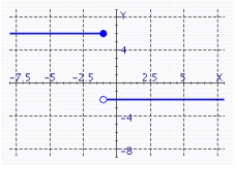
B)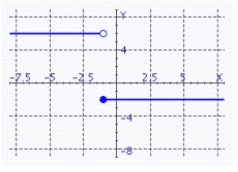
C)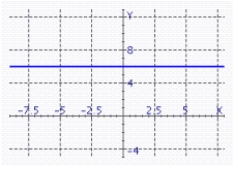
D)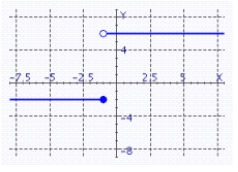

A)

B)

C)

D)


Unlock Deck
Unlock for access to all 147 flashcards in this deck.
Unlock Deck
k this deck
72
If  are real numbers, find
are real numbers, find 

A)f ( a ) + f ( h ) = a 2 + h 2 + a + h + 2
B)f ( a ) + f ( h ) = a 2 + h 2 - a - h
C)f ( a ) + f ( h ) = a 2 + h 2 - a - h + 2
D)f ( a ) + f ( h ) = a 2 + h 2 - a - h - 2
E)f ( a ) + f ( h ) = a 2 + h 2 + a + h
 are real numbers, find
are real numbers, find 

A)f ( a ) + f ( h ) = a 2 + h 2 + a + h + 2
B)f ( a ) + f ( h ) = a 2 + h 2 - a - h
C)f ( a ) + f ( h ) = a 2 + h 2 - a - h + 2
D)f ( a ) + f ( h ) = a 2 + h 2 - a - h - 2
E)f ( a ) + f ( h ) = a 2 + h 2 + a + h

Unlock Deck
Unlock for access to all 147 flashcards in this deck.
Unlock Deck
k this deck
73
Find 
 and
and 
A)
B)
C)
D)
E)

 and
and 
A)

B)

C)

D)

E)


Unlock Deck
Unlock for access to all 147 flashcards in this deck.
Unlock Deck
k this deck
74
Find the distance d (A, B) between the points A (4, - 7) and B (7, 6).
A)13.24
B)12.34
C)13.84
D)13.34
E)13.04
A)13.24
B)12.34
C)13.84
D)13.34
E)13.04

Unlock Deck
Unlock for access to all 147 flashcards in this deck.
Unlock Deck
k this deck
75
A college student receives an interest-free loan of $8,570 from a relative. The student will repay $170 per month until the loan is paid off. After how many months will the student owe $5,000?
A)after 4.2 months.
B)after 21 months.
C)after 31 months.
D)after 29 months.
E)after 24 months.
A)after 4.2 months.
B)after 21 months.
C)after 31 months.
D)after 29 months.
E)after 24 months.

Unlock Deck
Unlock for access to all 147 flashcards in this deck.
Unlock Deck
k this deck
76
Find the distance d (A, B) between the points A (2, 1) and B (2, - 3).
A)3
B)1
C)4
D)0
A)3
B)1
C)4
D)0

Unlock Deck
Unlock for access to all 147 flashcards in this deck.
Unlock Deck
k this deck
77
Find a formula that expresses the fact that P(x, y) is a distance 4 away from the origin.
A)
B)
C)
D)
E)
A)

B)

C)

D)

E)


Unlock Deck
Unlock for access to all 147 flashcards in this deck.
Unlock Deck
k this deck
78
Find the domain of 

A)
B)
C)
D)
E)


A)

B)

C)

D)

E)


Unlock Deck
Unlock for access to all 147 flashcards in this deck.
Unlock Deck
k this deck
79
A 100-foot-long cable of diameter 2 inches is submerged in seawater. Because of corrosion, the surface area of the cable decreases at the rate of 500in 2 per year. Express the diameter d of the cable as a function of time t (in years). (Disregard corrosion at the ends of the cable.)
A) inches
inches
B) inches
inches
C) inches
inches
D) inches
inches
E) inches
inches
A)
 inches
inchesB)
 inches
inchesC)
 inches
inchesD)
 inches
inchesE)
 inches
inches
Unlock Deck
Unlock for access to all 147 flashcards in this deck.
Unlock Deck
k this deck
80
An object is projected vertically upward from the top of a building with an initial velocity of  ft/sec. Its distance
ft/sec. Its distance  in feet above the ground after
in feet above the ground after  seconds is given by the equation
seconds is given by the equation  Find its maximum distance above the ground.
Find its maximum distance above the ground.
A) ft
ft
B) ft
ft
C) ft
ft
D) ft
ft
E) ft
ft
 ft/sec. Its distance
ft/sec. Its distance  in feet above the ground after
in feet above the ground after  seconds is given by the equation
seconds is given by the equation  Find its maximum distance above the ground.
Find its maximum distance above the ground.A)
 ft
ftB)
 ft
ftC)
 ft
ftD)
 ft
ftE)
 ft
ft
Unlock Deck
Unlock for access to all 147 flashcards in this deck.
Unlock Deck
k this deck



